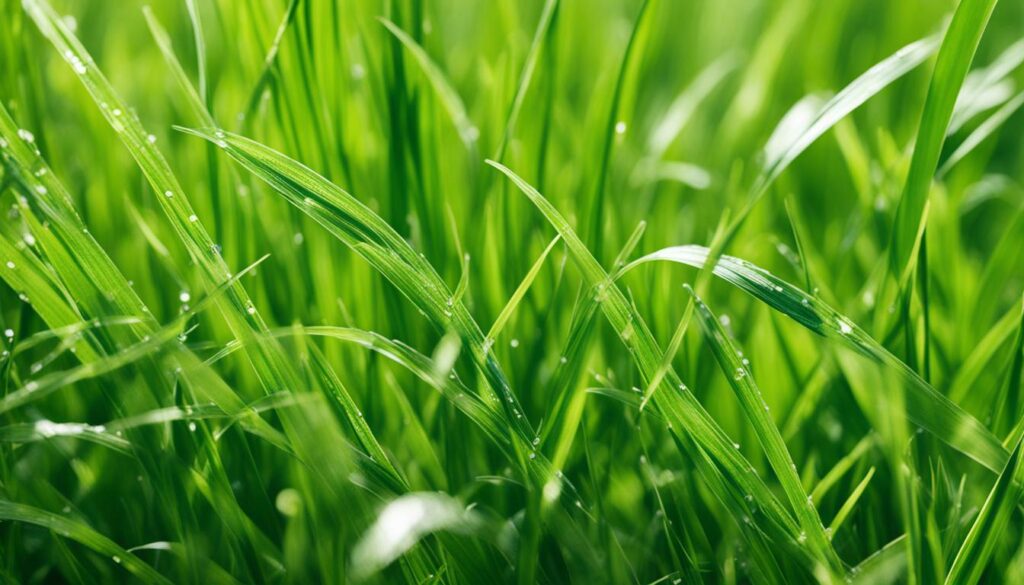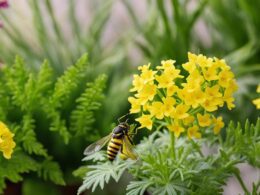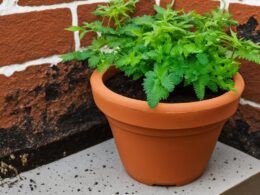If you have pets and enjoy spending time in your outdoor space, you may have wondered about the connection between grass and fleas. Are fleas really living in your lawn, waiting to pounce on your furry friends? Let’s explore the facts and debunk the myths surrounding fleas and their preferred habitats.
Fleas are tiny insects that can easily latch onto rodents or other animals and find their way into your yard. Once there, they can quickly infest your pets and even make their way into your home. So, it’s essential to understand how to protect your outdoor space and pets from these pesky creatures.
While fleas have the ability to jump onto blades of grass, it’s important to note that grass alone is not their favored habitat. Maintained lawns generally do not provide the ideal conditions for fleas to survive and multiply.
Fleas prefer areas that are shady, moist, and protected from extreme environmental conditions. Open, sun-exposed areas with low humidity are not suitable for fleas to thrive. Instead, they find refuge in sheltered spots such as dense ground cover, vegetation, organic debris, and loose soil.
Factors such as moisture levels and environmental conditions play a significant role in flea survival in grass. Well-irrigated areas, abundant rainfall, and poorly drained soil are not favorable for fleas. Sprinklers and irrigation systems can create conditions that are unfavorable for flea survival by keeping the ground too wet. The high moisture levels can drown flea larvae and wash away their essential food source, flea feces.
So, rest assured that your well-maintained lawn is not likely to harbor a significant flea population. However, it’s still important to take proactive measures to protect your outdoor space and pets. Regular lawn treatments specifically designed to control fleas, ticks, and ants can create a barrier of protection for your yard.
By understanding the facts about fleas and implementing appropriate preventive measures, you can confidently enjoy your outdoor space with your beloved pets, free from the worries of flea infestations.
Understanding Flea Habitats
While fleas have the ability to jump onto blades of grass, well-maintained lawns do not typically provide a suitable habitat for these pests. Fleas prefer areas that are shady, moist, and protected from extreme environmental conditions. Open, sun-exposed areas with low humidity are not ideal for fleas to survive and thrive in. However, fleas can still be found in sheltered areas that offer the right conditions for their existence.
One important point to note is that grass alone is not a preferred habitat for fleas. Instead, they tend to thrive in areas such as dense ground cover, vegetation, organic debris, and loose soil. These locations provide the necessary shade, moisture, and protection for fleas to establish themselves and multiply.
It’s essential to understand that fleas can climb onto nearby blades of grass in search of a host, but grass alone is not their primary choice. Fleas are attracted to environments that meet their specific needs, including shady and moist conditions that grass alone may not provide.
By recognizing the flea habitats that are conducive to their survival, you can take proactive steps to minimize the risk of flea infestation. Regularly maintaining your lawn, removing excessive vegetation or debris, and keeping the soil properly aerated can help create an environment that is less hospitable to fleas. Additionally, implementing flea control measures for your pets, such as regular flea treatments and proper grooming, can further reduce the chances of fleas entering your home from outdoor spaces.
Factors Affecting Flea Survival in Grass
The survival of fleas in grass is influenced by several factors, particularly moisture levels. Fleas are unable to thrive in areas that receive ample irrigation, abundant rainfall, or have poor drainage. The presence of sprinklers and irrigation systems can create unfavorable conditions for flea survival by keeping the ground excessively wet.
High soil moisture poses a threat to flea larvae as it can lead to their drowning, thereby reducing their chances of survival. Moreover, the excessive moisture in the grass dissolves and washes away flea feces, which larvae rely on for nutrition and growth.
These factors collectively contribute to the limited survival of fleas in grass and make it less likely for them to establish a population in well-maintained lawns. By ensuring proper moisture management and maintaining your lawn’s irrigation system, you can create an environment that is unfavorable for flea survival.
Conclusion
Fleas can be a nuisance and a concern for pet owners, but the good news is that there are effective flea control methods available. While fleas may have the ability to jump onto grass, well-maintained lawns do not provide a suitable habitat for them.
Factors such as moisture levels and environmental conditions play a significant role in flea survival in grass. However, regular lawn treatments for fleas, ticks, and ants can provide a barrier of protection for your outdoor space and pets. By understanding the facts about fleas and taking proactive measures to control them, you can enjoy your lawn without worrying about these tiny pests.
Protecting your pets and outdoor space from fleas is essential for their health and your peace of mind. Invest in professional flea control and regular lawn treatments to create a safe environment for your furry friends to play and explore. With the right precautions in place, you can ensure a flea-free lawn and enjoy your outdoor space to the fullest.
Can Fleas Infest Grass and Spread to My Yard?
Yes, fleas can infest grass and spread to your yard if there are pets with fleas in the area. To prevent this, you can learn how to kill creeping charlie, which is a common plant fleas like to harbor in. Keeping your yard well-maintained and treating your pets for fleas can also help.










